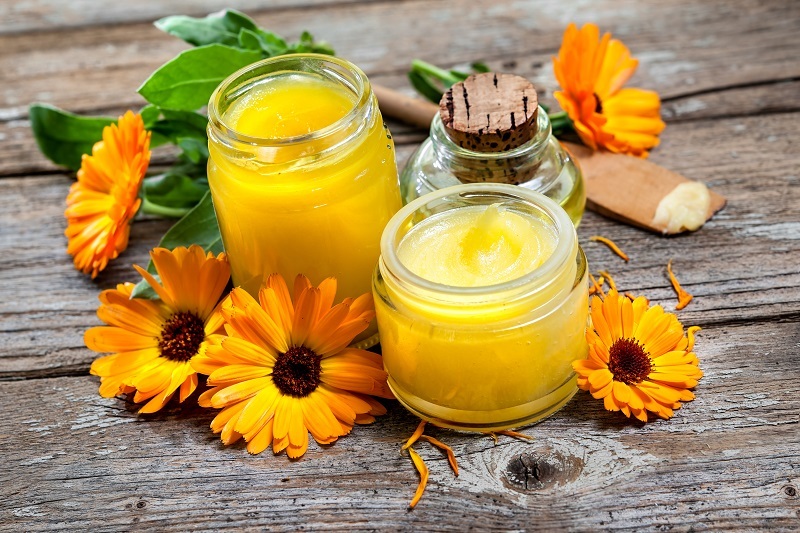Birth month flowers offer a unique glimpse into personal traits
Posted on 22/08/2025
Birth Month Flowers Offer a Unique Glimpse Into Personal Traits
When it comes to uncovering the mystery of personal traits, many turn to astrology or numerology. However, have you ever considered that your birth month flower could also offer deep insights into your character? Birth month flowers have been celebrated for centuries, not only for their beauty but also for the deeper meanings and symbolism they hold. From the vibrant carnation representing January to the luscious holly of December, each birth month flower reflects unique characteristics and personal attributes.

What Are Birth Month Flowers?
Birth month flowers are specific types of flowers traditionally associated with each month of the year. This concept mirrors the idea of birthstones but places the focus on floral beauty and symbolism. These blooms don't just serve as thoughtful birthday gifts; they also tell a story, reflecting personality traits, emotional tendencies, and even potential destinies.
Why Birth Month Flowers Matter
Throughout history, flowers have held significance in rituals, ceremonies, and every day life, acting as messengers of love, luck, hope, and remembrance. The meaning behind each birth month flower goes deeper than surface-level beauty. By exploring these botanical emblems, you may discover hidden facets of your own character and those around you.
Exploring The Meanings: A Month-by-Month Guide
Let's take an insightful journey through the birth month flowers and unveil what each blossom can reveal about a person's nature.
January: Carnation & Snowdrop
- Carnation - Symbolizes admiration, love, and fascination. Those born in January are often known for their steadfast loyalty and affectionate nature. Just as the carnation thrives in winter's cold, January-born are resilient and nurturing.
- Snowdrop - Represents hope and rebirth. Individuals associated with the snowdrop display quiet strength, gentleness, and optimism, often bringing light in trying times.
February: Violet & Primrose
- Violet - Stands for modesty, loyalty, and faithfulness. February natives are often humble, deeply creative, and steadfast friends.
- Primrose - Symbolizes young love and new beginnings. Primrose personalities are adventurous, vibrant, and are not afraid to take the first step in any challenge.
March: Daffodil
- Daffodil - Indicates rebirth, renewal, and unparalleled joy. March-born people possess cheerful dispositions and have a knack for inspiring those around them with hope and positivity.
April: Daisy & Sweet Pea
- Daisy - Embodies innocence, purity, and true love. Those with daisies as their birth flower are optimistic, honest, and youthful at heart.
- Sweet Pea - Expresses delicate pleasure and gratitude. April-born individuals are known for their grace, appreciation, and gentle yet vibrant spirits.
May: Lily of the Valley & Hawthorn
- Lily of the Valley - Signifies humility, sweetness, and the return of happiness. Those born in May bring serenity and harmony wherever they go.
- Hawthorn - Symbolizes hope and supreme happiness. Hawthorn personalities are enthusiastic, supportive, and always look towards brighter days.
June: Rose & Honeysuckle
- Rose - The universal symbol of love and passion. June-born individuals are romantic, passionate, and sensitive with a strong sense of loyalty.
- Honeysuckle - Stands for devoted affection. Those with this birth flower radiate warmth and joy, forming connections that endure the test of time.
July: Larkspur & Water Lily
- Larkspur - Emblems of positivity and an open heart. July natives are charismatic, lighthearted, and possess a naturally uplifting aura.
- Water Lily - Highlights purity and eloquence. These individuals have a calm, reflective nature paired with tremendous inner strength.
August: Gladiolus & Poppy
- Gladiolus - Symbolizes integrity, strength, and moral character. Born leaders, August natives exude confidence, ambition, and an unwavering commitment to their principles.
- Poppy - Represents imagination and eternal sleep. Creative, imaginative, and thoughtful, these individuals often dream big and inspire others to think outside the box.
September: Aster & Morning Glory
- Aster - Known for wisdom, faith, and valor. September-born people are reflective, intuitive, and are often sought out for their wise counsel.
- Morning Glory - Signifies affection and unrequited love. With an endless well of empathy, September natives are caring, kind, and sensitive.
October: Marigold & Cosmos
- Marigold - Symbolizes warmth, creativity, and passion. October individuals are bold, resourceful, and always ready to bring a burst of energy into any environment.
- Cosmos - Expresses order and peace. October-born people value harmony and tend to bring balance and tranquility to those around them.
November: Chrysanthemum
- Chrysanthemum - Represents joy and optimism. November natives are magnetic, resilient, and approach life with a zest for happiness and contentment.
December: Narcissus & Holly
- Narcissus - Stands for good wishes and hope. Known for their positivity, December-born individuals inspire others with their radiance and forward-thinking attitude.
- Holly - Symbolizes protection and defense. These individuals are dependable, strong-willed, and form a protective barrier around loved ones.
How Are Birth Month Flowers Linked to Personal Characteristics?
The ancient language of flowers, known as floriography, attributed emotions and traits to various blooms. This practice continues to permeate modern interpretations of personality based on birth flowers. Whether you see yourself in the vivacious poppy or the reserved violet, your birth month flower may accentuate parts of your internal landscape that are waiting to be recognized.
Common Traits Reflected in Birth Month Flowers
- Resilience - Many birth month flowers bloom in offseason or challenging climates, symbolizing inner strength.
- Love and Affection - Roses, carnations, and lilies are timeless emblems of heartfelt connection.
- Optimism and Joy - Daffodils, marigolds, and chrysanthemums reflect an uplifting spirit.
- Wisdom and Intuition - Flowers like aster and violet are associated with deep thinkers and loyal companions.
- Creativity - Cosmos, marigold, and poppy indicate innovative, artistic personalities.
By embracing the symbolism behind your unique birth month flower, you invite a richer sense of self-awareness and even a deeper connection with nature.
Choosing Birth Month Flowers as Personalized Gifts
Giving birth month flowers is a thoughtful and meaningful gesture that shows awareness of the recipient's individuality. Whether in a bouquet, a garden, or as part of jewelry and art, these blooms carry personal messages and a unique sense of celebration.
Creative Ways to Give Birth Month Flowers
- Bouquets - Combine the recipient's birth month flowers with their favorite blooms for a customized arrangement.
- Personalized Jewelry - Many jewelers now incorporate floral motifs, allowing you to wear your blossom and personal traits close to your heart.
- Home Decor - Framed botanical prints or pressed flowers of one's birth month make elegant and personal additions to any space.
- Gardening Kits - Gift seeds or potted versions of birth month flowers--a gift that grows with them!
- Birthday Cards - Add meaning to your wishes by mentioning the unique symbolism of their birth flower.
The Cultural Impact of Birth Month Flowers
Different cultures worldwide have adopted and adapted the language of flowers. In England, the Victorian era saw a rise in floriography, where lovers would exchange secret messages through bouquets. Today, countries like Japan continue the tradition (called Hanakotoba), assigning meanings and traits to specific flowers, frequently ascribing them to months or birthdays.
Regional Differences in Birth Month Flower Meanings
- Europe - Many European countries have lists of official birth flowers, sometimes differing from the American tradition.
- Asia - In Japan, flowers such as cherry blossoms and chrysanthemums play a significant role in cultural events, influencing birth month associations and personal symbolism.
- Americas - North and South America often follow the Western canon but introduce native blooms for local flavor.
Each variation further personalizes the connection, weaving birth month flowers even deeper into the fabric of personal identity.
Tips for Selecting Your Own Birth Month Flower
- Identify the traditional flower for your month, but feel free to explore alternative or regional options.
- Consider dual flowers - Some months offer two or more choices, each providing a nuanced interpretation of your traits.
- Pay attention to color variants, as flower colors further refine their symbolism (e.g., red carnations for love, white for purity).
- Read the language of flowers - Dive into floristry books or online resources to learn more about what your birth flower represents.
Embracing your birth month flower can be as simple as planting it in your garden, featuring it in your home, or gifting it to someone on their special day. Each time you interact with your blossom, you'll be reminded of the unique traits and stories that shape your identity.
The Science Behind Birth Month Flowers and Personality
While traditional beliefs and symbolism offer compelling narratives, is there any scientific basis for the link between birth month flowers and personal traits? Psychologists suggest that while no direct biological connection exists, the cultural meanings we assign to certain flowers can profoundly shape our self-perception and the image we project to others.
Engaging with your birth flower, therefore, acts as a form of positive affirmation. When you interpret your character through the lens of your symbolic flower, you reiterate and reinforce those qualities within yourself.

Modern Adaptations: Birth Flowers in Lifestyle and Wellness
In recent years, birth month flower interpretations have found a place in holistic wellness, mindfulness practices, and self-care routines. People are decorating with, meditating on, and even cooking with flowers connected to their birth month, using the symbolism to inspire personal growth and reflection.
Popular Uses of Birth Month Flower Symbolism
- Meditation and Journaling - Reflect on your birth flower's meaning to inspire daily affirmations.
- Wellness Elixirs - Infuse teas and tonics with edible birth month flowers like violets, calendula, or rose petals.
- Art and Expression - Use your birth flower as a motif in creative projects to express your traits.
Conclusion: Discover Your Birth Month Flower and Embrace Its Traits
Birth month flowers offer more than just a unique way to celebrate birthdays--they open a door to self-reflection and personality discovery. As you explore the meanings of your own special blossom, you'll find new ways to express yourself, connect with others, and appreciate the timeless beauty of floral symbolism.
Embrace the unique glimpse your birth month flower offers into your personal traits--and let its beauty inspire you every day.
Latest Posts
Birth month flowers offer a unique glimpse into personal traits
Simplify Flower Care with These Uncomplicated Steps
Five Exquisite Flowers to Gift on Valentine's Day
A Floral Tale: Peony Flowers, Their Symbolic Significance, and Colors







